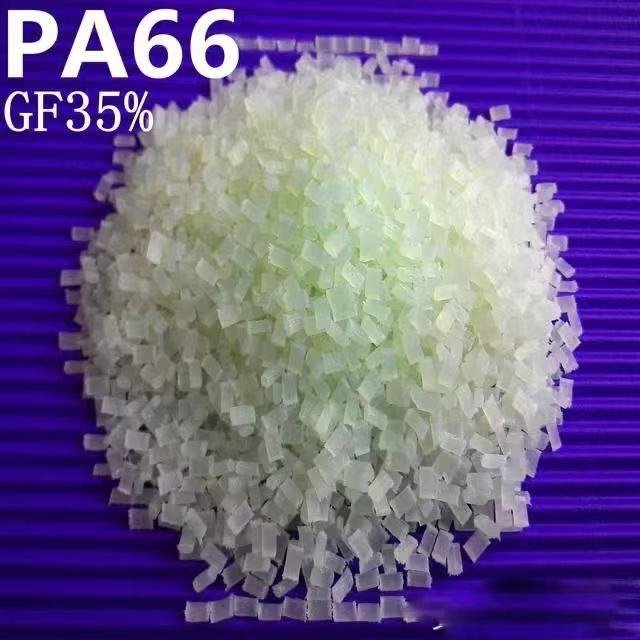PA66 & PA6 (different)
PA is one of the common engineering plastics, and PA6 and PA66 are common nylon materials. The two structures are similar and there are many things in common.
So what is the difference between the two?

structure
If you want to analyze what the difference between them, you must start with their structure. Everyone knows that the PA6 is aggregated by the nipples of the nipples, and the nylon PA66 is obtained by the hekexamine and the adenic acid complication polymer. PA6 has the same molecular formula as PA66, but the structure is different.


It is precisely because the differences lead to different properties, such as different hydrogen bonding forces.

The number of hydrogen bonds in Figure PA6 and PA66
The number of hydrogen bonds in PA66 is more than PA6, and the between PA66 molecules is stronger than the PA6 molecular force, so PA66 is better than PA6 in the nature of thermal science (so the processing temperature is higher), the rigidity of PA66 is better than PA6, and the toughness of PA6 is tough. Better than PA66, the water absorption speed of PA6 is faster than PA66, and the differences between PA6 and PA66 are mainly caused by the above hydrogen bonding factors.
performance
The PA66 melting point is 260 ~ 265 ° C, and the glass transition temperature (dry state) is 50 ° C. The density is 1.13 ~ 1.16 grams/cubic centimeter.
PA6 -bit translucent or opaque milky white crystalline polymer particles, melting point 220 ° C, the thermal decomposition temperature is greater than 310 ° C, the relative density is 1.14, the water absorption rate (24 hours in 23 ° C water) 1.8%, it has excellent abrasion resistance and self -lubricating lubrication High mechanical strength, high heat resistance, good insulation performance, excellent low temperature performance, good self -extinguishing chemical resistance, especially excellent oil resistance.
Compared with PA66, PA6 is easy to mold, the product has a good surface luster, the temperature range is wide, but the water absorption rate is high and the size stability is poor. Small rigidity, low melting point, can be used for a long time in harsh environments, can still maintain sufficient stress within a wider temperature range, and continuously use the temperature of 105 ° C.
Overall the performance of PA66 and PA6 is as follows:
Mechanical performance: PA66> PA6
Hiramne performance: PA66> PA6
Price: PA66> PA6
Following point: PA66> PA6
Water absorption: PA66
Tall resistance: PA66
Concretion Time: PA66
Model processing performance: PA66
Process conditions
Drying
PA6 is easy to absorb moisture, so the drying before processing should pay special attention. If the material is supplied to packaged with waterproof materials, the container should be kept closed. If the humidity is greater than 0.2%, it is recommended to dry in the hot and dry air above 80 ° C for 3 to 4 hours. If the material has been exposed in the air for more than 8 hours, it is recommended to perform vacuum drying at 105 ° C and more than 1 to 2 hours. Use a dehumidifier dryer.
If PA66 is sealed before processing, there is no need to dry. If the storage container is opened, it is recommended to dry in dry air at 85 ° C. If the humidity is greater than 0.2%, 105 ° C, 1 ~ 2 hours of vacuum drying. *** Use dehumidifier dryer. For molding temperature: 260 ~ 310 ° C, the enhanced variety is 280 ~ 320 ° C.
Mold temperature
PA6: 80 ~ 90 ℃. The temperature of the mold significantly affects the crystallinity, and the crystallinity affects the mechanical characteristics of plastic parts.
For thin walls, the long process of plastic parts is also recommended to apply higher mold temperature. Increasing mold temperature can increase the strength and stiffness of the plastic parts, but reduce the toughness. If the wall thickness is greater than 3mm, it is recommended to use a low temperature mold of 20 ~ 40 ° C. For glass reinforcement material mold temperatures should be greater than 80 ° C.
PA66: It is recommended to 80 ° C. The temperature of the mold will affect the crystallinity, and the crystallinity will affect the physical characteristics of the product.
For thin -walled plastic parts, if the mold temperature below 40 ° C is used, the crystallinity of the plastic parts will change over time. In order to maintain the geometric stability of the plastic parts, annealing is needed.
Melting temperature
PA6: 230 ~ 280 ° C, the enhanced variety is 250 ~ 280 ° C.
PA66: 260 ~ 290 ℃. The product of the glass additive is 275 ~ 280 ° C. The melting temperature should avoid higher than 300 ° C.
Injection
They are generally between 750 and 1250Bar (depending on the design of materials and product).
Injection speed
All are high -speed (slightly reduced for enhanced materials).
Runway and mouth
Because the solidification time of PA6 and PA66 is very short, the location of the port is very important. Do not be less than 0.5*T (here T is the thickness of the plastic parts). If the heat flow is used, the size of the mouth should be smaller than the use of conventional flow channels, because the thermal runway can help prevent the materials from being frozen prematurely. If you use a submerged port, the small diameter of the pouring mouth should be 0.75mm.
Application
PA6 Engineering Plastic has high resistance to tension strength, good impact resistance, excellent abrasion resistance, chemical resistance and lower friction coefficients. It makes it better comprehensive performance, mainly used in the automotive industry and electronic appliances.


The comprehensive performance of PA66 has the advantages of good comprehensive performance, high strength, good rigidity, impact resistance, oil resistance and chemicals, abrasion resistance and self -lubrication, especially hardness, rigidity, heat resistance, and peristaltic performance. Because PA66 is higher than PA6, it is more used to produce industrial silk such as curtain lines.

























